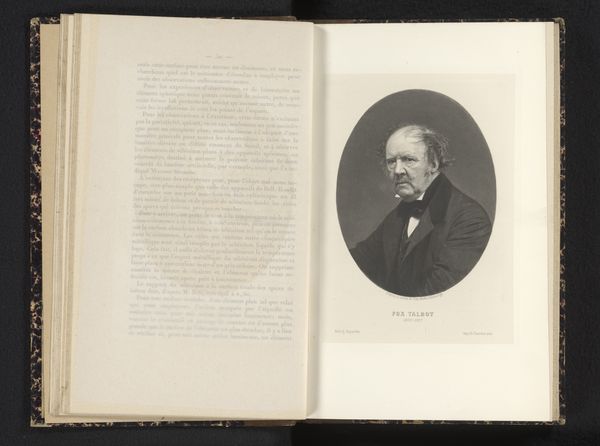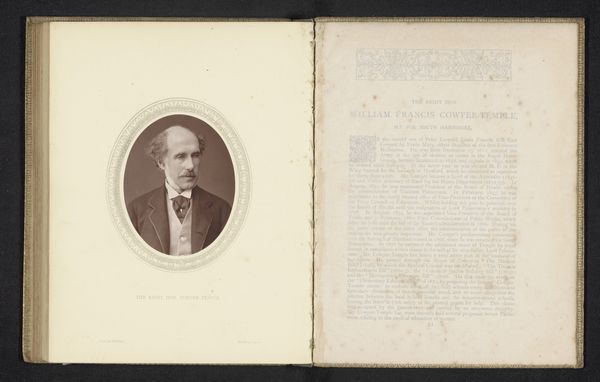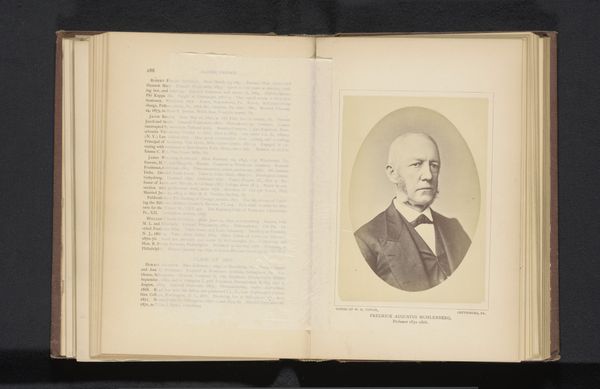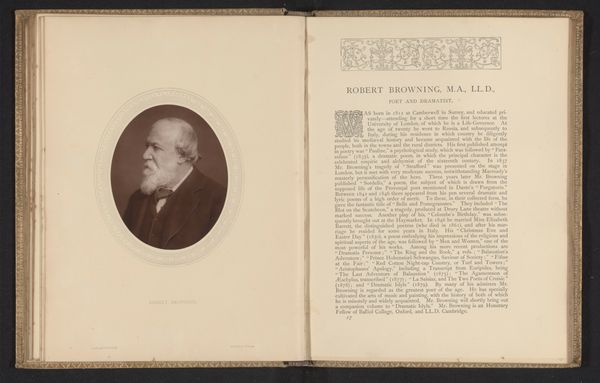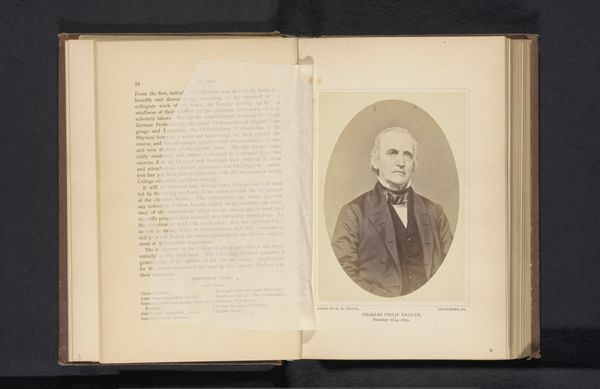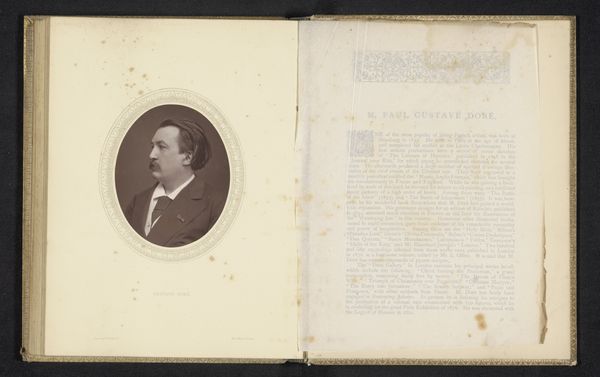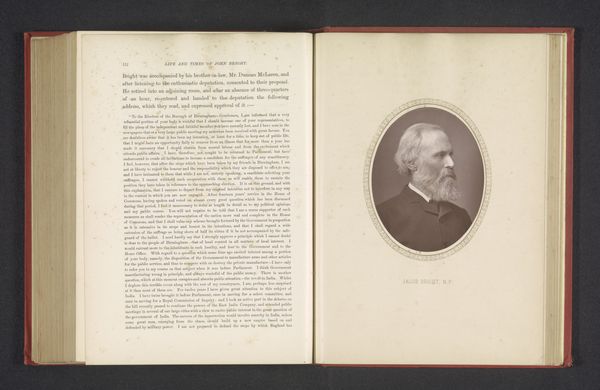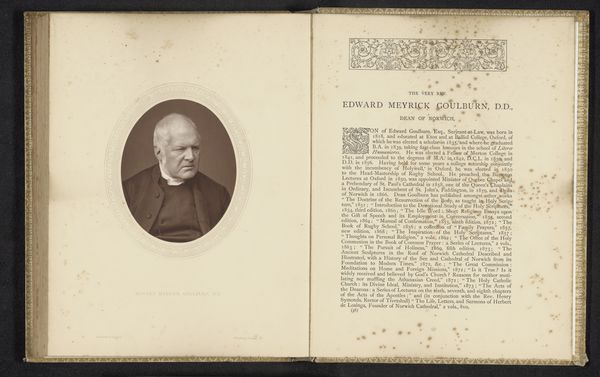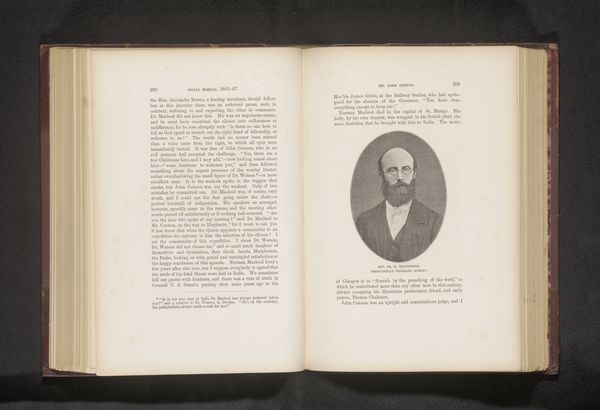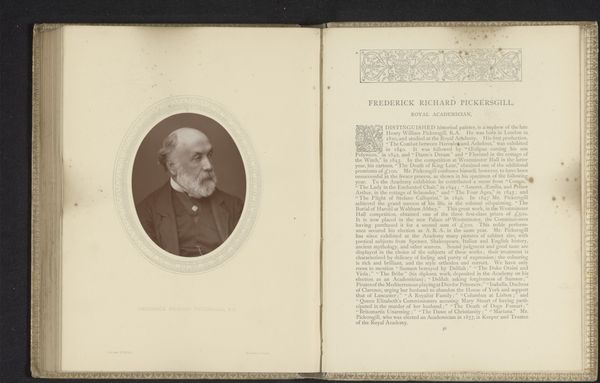
print, photography
#
portrait
#
aged paper
#
homemade paper
#
paper non-digital material
#
paperlike
# print
#
sketch book
#
hardpaper
#
photography
#
personal sketchbook
#
journal
#
folded paper
#
paper medium
Dimensions: height 120 mm, width 93 mm
Copyright: Rijks Museum: Open Domain
Curator: Here we have what appears to be a print reproduction of a photographic portrait, "Portret van William Henry Fox Talbot," attributed to John Moffat and created before 1890. It’s presented within what looks like an opened journal or scrapbook. Editor: Immediately, the aged, almost brittle texture of the paper and ink strikes me. It has a very definite weight and feel to it, quite different from a modern reproduction. One senses the labor in producing the print. Curator: Absolutely. Moffat's strategic use of the oval vignette isolates Talbot’s figure, intensifying the focus on his features, his gaze. The high contrast further accentuates the architectural planes of his face. Note also how the framing text actively engages with Talbot as the 'Father' of Photography. Editor: I'm also drawn to the presentation of the photograph *within* the journal itself. What does the material context – the sketchbook, the presumed writings – tell us about how photography was consumed and understood at the time? It’s a piece not only meant for viewing, but for holding, annotating… engaging with through the act of handling the physical object. Curator: Precisely! This work invites contemplation on how the convergence of image and text contributes to constructing an almost hagiographic narrative around Talbot. Moffat skillfully employs established portrait conventions to convey Talbot’s intellectual gravitas. The arrangement further immortalizes his contributions, not only as a technical innovator but also as a cultural figure of significant import. Editor: Considering that early photographic printing involved labor-intensive processes like albumen printing or platinum printing, what’s striking to me is the democratizing effect of printmaking here – it allows for wider distribution and engagement with Talbot’s image, turning him into an icon not just through photography but through mass reproduction. Curator: And through that distribution, ideas circulate, too. Looking at the composition again, how do the ovoid shape, his somewhat severe expression, and formal dress contribute to Talbot’s constructed persona? Editor: I agree the portrait's strength stems from its tactile presence as much as its content; you get the sense this page has been turned countless times. Its endurance speaks to its impact. Curator: It’s a wonderful reminder that analyzing formal structure and contemplating historical impact can exist symbiotically. Editor: Indeed, recognizing the significance of both the artistic and material histories offers a richer understanding.
Comments
No comments
Be the first to comment and join the conversation on the ultimate creative platform.

